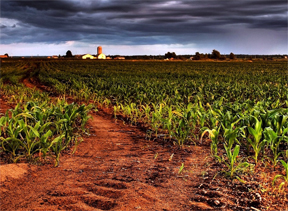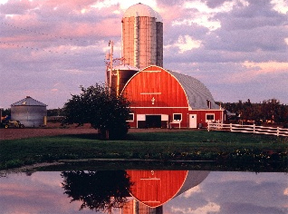 I have written for agriculture media (trade press and online publications) for more than twelve years. This is a market that many writers neglect because:
I have written for agriculture media (trade press and online publications) for more than twelve years. This is a market that many writers neglect because:
1) it is a specialized niche
2) it targets working professionals in the industry
3) many of these journals and magazines are published regionally (to cover a specific area or state)
These agriculture and farming publications use a vast amount of material to cover
changes in the industry. Pay is slightly below other trade publications. Pay per word averages between .15 -.45 cents per word for feature articles.
Here is a run-down of all you ever wanted to know about freelance writing for agriculture trade publications and websites.
What does it take to write for agriculture press?
Writing for the agriculture press requires you to fact-find. The typical agriculture article consists of reworking difficult facts and findings into an easy-to-ready cohesive article that readers will understand. Any writer who expects to satisfy an editor by fine writing or by padding material in his article is destined to disappoint.
An agriculture editor would rather receive (from an aspiring writer) a 350-word tightly-written article about how “smoke from wildfires have slowed Central Washington’s pear and apple harvest this year” than to receive 2,000-word technical dissertation from an agricultural machinery “expert” who could have told his story in 500 words or less.
What Steps Should You Take?
 Because this niche is a small segment in the freelance market, it is difficult to make a full-time living writing just for agriculture media, unless you can find other angles for an article to pitch to culinary, gardening, rural, and lifestyle magazines and websites.
Because this niche is a small segment in the freelance market, it is difficult to make a full-time living writing just for agriculture media, unless you can find other angles for an article to pitch to culinary, gardening, rural, and lifestyle magazines and websites.
You can find many agriculture publications by searching on Google with the keywords “agriculture magazines” or “agriculture publications”—this will list websites of publications, or directories that have categorized such publications. Always visit the website of the publication and study the kinds of material that the editor accepts. If the publication does not offer its writer’s guidelines online, simply e-mail the editor and request them. Also make sure the publication is a paying
Always visit the website of the publication and study the kinds of material that the editor accepts. If the publication does not offer its writer’s guidelines online, simply e-mail the editor and request them. Also make sure the publication is a paying market, and not a non-paying peer-to-peer publication.
Be Aware of Different Payment Rates
I have found that some agriculture publications have different rates, and editors rarely raise the rates unless your articles have appeared in the publication a dozen or so times. One publication paid me .25 cents a word for a long time. Then the editor advanced the rate to .35 cents to persuade me to provide local interviews in each of my articles.
A couple years ago the editor increased my pay to .45 cents a word to cover a particular class of material (because such a writer needs special knowledge and skills to cover such topics). And yes, I confess, I find such articles time-consuming and hard to finish. However, I am satisfied with the pay rate and the positive acknowledgment from the editor.
What Topics Can You Cover?
 In selling agriculture articles, the element of news is vital. However, this is not “news” in the sense that it is shocking, happening this second, or even extraordinary. This type of “news” is relevant to the special class of readers and it must interest the largest possible circle of readers.
In selling agriculture articles, the element of news is vital. However, this is not “news” in the sense that it is shocking, happening this second, or even extraordinary. This type of “news” is relevant to the special class of readers and it must interest the largest possible circle of readers.
I’ve sold many articles on topics related to farming, meat production, dairying, fertilizers, poultry, rural sanitation and hygiene, crop planning, and yes, even cow manure. Every farm has cows and chickens. The same is true of soil; thus, farmers want to learn new ways to improve their soil. Agricultural mechanics is another topic that appeals broadly to readers. Any item dealing with the application of power in any mode for improving the production of agricultural work is popular with editors. These topics are also important to readers; therefore they appeal to almost every agriculturist who reads the trade publication.
Agricultural mechanics is another topic that appeals broadly to readers. Any item dealing with the application of power in any mode for improving the production of agricultural work is popular with editors. These topics are also important to readers; therefore they appeal to almost every agriculturist who reads the trade publication.
Any item dealing with the application of power in any mode for improving the production of agricultural work is popular with editors. These topics are also important to readers; therefore they appeal to almost every agriculturist who reads the trade publication or visits the publication’s website. To write on such subjects you must have a specific technical knowledge which most general freelance writers lack. It is also essential to slant your article according to the focus of each publication.
Make Sure to Add Photos
Agriculture editors almost always want photographs. The “picture appeal” is so strong with readers that many trade publications run pictures alongside articles. Any article, illustrated with good photographs, will encourage editors to buy your article. Payment for photos run between $25 and $75 a photo.
Article by Dennis Hunter



